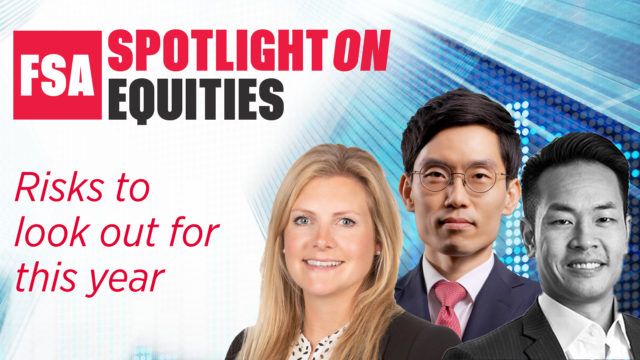What are the key risks that investors should be aware of this year?

Caroline: Following the strong performance that we have seen since the market sell-off in early 2020, we believe that there is a level of expectation within markets around an economic recovery. Therefore, we would caution investors that any further delay in this occurring or a pullback in stimulus could cause some further market volatility this year.
Nevertheless, we have been impressed by the resilience in earnings for the majority of the companies we have held in 2020, encouraging our belief that companies which are helping provide solutions to unmet needs should be exposed to enduring sources of demand despite ongoing economic uncertainty.

Phil: Throughout 2020, stock markets took a sharp bounce back after a pandemic-induced crash at the beginning of the year.
The recuperation was partially due to an extremely low interest rate environment, coupled with ample liquidity, particularly in the west. It is fair to anticipate the possibility of liquidity withdrawals and a reflation story to push up interest rates as well as drag down equity valuation multiples.
In saying this, we feel relatively comfortable with Asian stocks whose valuation multiple is lower than that of global peers. Fiscal spending was controlled in 2020 within Asia owing to the successful containment of the spread of Covid-19.
According to the Economist, the US recorded a fiscal deficit of 14.9% whilst most Asian countries recorded a fiscal deficit of 5-7%. In addition, many Asian countries had recorded a trade surplus due to their strength in the manufacturing business. These fundamentals provide a foundation for the rationale around the strength of Asian currencies in 2021.

Marco: At face value China was “first in/first out” to Covid-19. The strict lockdown approach paid dividends relative to the softer approaches in the West, which has suffered with far higher infection rates.
With vaccines now being rolled out at varying speeds across the world, many of the worst hit countries should benefit from a resurgence in activity in the second half of the year, fueled by pent-up consumer demand. China could therefore potentially see aggregate capital outflows as investors begin to target those markets that are enjoying cyclical rebounds. Secondly, China will print very strong year-on-year growth numbers in Q1 2021 as comparisons with last year are easy.
This may stoke concerns about inflation picking up, and therefore the need for policy tightening, which could take the wind out of the equity market.
Those stocks that have re-rated most aggressively would be the most vulnerable in this scenario. TT’s strong valuation focus and flexibility to quickly reposition the portfolio should allow us to mitigate some of this risk.
What areas of the market are you currently avoiding?

Caroline: Our investment process focuses on positive selection, looking to only invest in companies providing positive impact on the planet with attractive financial investment cases. This has led us to currently be underweight information technology, communication services and financials.
Given that the fund is highly selective with regard to both impact and ESG, it will typically avoid stocks involved in controversial activities. This means that the fund also does not invest in companies with a material exposure to fossil fuels (mining, extraction and energy production), tobacco, alcohol, gambling or weapons.
On a one-year view we would also note that the life sciences sector is facing stronger demand given the tailwinds from Covid. We already have exposure to very strong companies in this area and are happy with this as we believe that their long-term outlook remains favourable.

Phil: The Fund is open to many investment opportunities thus will avoid strict country and industry biases. The one core belief is to avoid companies that are seen to not be willing to innovate or at least adapt to new trends. Even if the valuations of these companies are deemed cheap, the Fund will avoid investing in these names.

Marco: We hold no banks or utilities in China – whilst earnings momentum for banks may be turning, they have structural challenges in growing and allocating capital to the correct segments of the economy, particularly this year when real estate loans are being capped due to regulation.
Instead, we have holdings in fintech, which we believe are extremely cheap, do not have the inflated cost bases of traditional banks, and are taking market share. With regard to utilities, they also face structural issues from an ESG and ROIC perspective.
Firstly, there are a decreasing number of participants who are eligible to own dark energy sources, but more importantly, China will be leading the world in carbon neutrality goals for 2060, which means that carbon credit trading will also be implemented at the detriment to ROIC’s for the incumbent utilities.
The Spotlight On: Equities will run on 22 – 25 February and ends with a LIVE event (on the 25th) where we will bring together a panel of fund selectors and the fund managers to discuss their views and join an interactive Q&A session.
Find out more about our Spotlight On: Equities here: https://fundselectorasia.com/spotlight-on/equities
















